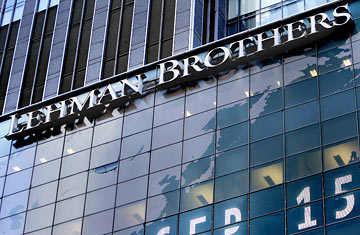
The economy was already teetering by early September 2008. But after a weekend of harried meetings among government officials and bankers, a critical decision was made: to not offer government subsidies to help finance a takeover of Lehman by a larger bank. As a result, on Monday, Sept. 15, the 158-year-old firm filed the largest bankruptcy in history and immediately sent ripples of near panic around the world. Lehman's collapse thus set off what many believe was the start of the global financial crisis. One year later, economists and regulators are still questioning whether the government's decision was a massive blunder or a painful but necessary lesson about moral hazard.
Employees are still bitterly grappling with the decision not to rescue the firm, and some are suing former CEO Richard Fuld for not giving them sufficient notice prior to termination. But not everyone lost in the collapse. Barclays, which paid $1.75 billion for some of Lehman's U.S. businesses — including its glitzy Manhattan headquarters — got what many regard as a fire-sale price.